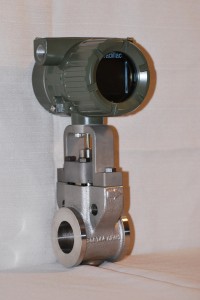 Ok, I’m sure your mother never said word one to you about measuring steam flow, but if she had, I’m sure she would have mentioned that setting up your steam system for precise measurement and minimal losses can be a toughy. The issue boils down (see what I did there?) to the measurement technology available versus the turndown that is required to capture the entire system load.
Ok, I’m sure your mother never said word one to you about measuring steam flow, but if she had, I’m sure she would have mentioned that setting up your steam system for precise measurement and minimal losses can be a toughy. The issue boils down (see what I did there?) to the measurement technology available versus the turndown that is required to capture the entire system load.
With Steam, as is with all compressible media, there are concerns surrounding a meter’s ability to measure below certain velocities (sound familiar?). While liquids would be just as likely to throw off measurement accuracies with low flow/velocity, the meter technologies available for liquids have much better turndown capabilities and accuracies when compared to those available for steam.
Due to the hostile nature of the steam measurement (Heat and Pressure) the choices become very limited in what you can use to measure it. Of all the technologies appropriate for steam measurement, which include differential pressure devices (orifice plates, target, venturies), and Vortex meters, the most reliable, accurate and generally accepted technology is the Vortex, which is a +/-1.0% of rate or reading device.
The issue with vortex meters when applied to a steam system is in the turndown, and what happens below the maximum turndown. As a general rule most installed vortex meters have around a 15 or 20:1 turndown, which isn’t ideal in comparison to liquid meters, but the more glaring issue is the low flow cut-off. This is the instance in which velocity drops to a point where flow passes over the shedder bar or blunt body and no longer sheds vortices in the flow stream. This velocity is Reynolds number dependent, but typically happens as the velocity transitions from turbulent to laminar. When velocity reaches this point the meter no longer has anything to measure and just goes to zero, however, depending on how accurately the meter was sized– which requires the actual maximum load to be known– this could occur with 15% to 50% of overall flow still moving past the meter. To combat this issue, we offer the Cadillac® Vortex CV-P Meter with the Piezoelectric Crystals externally mounted from flow stream, designed for robustness and improved low flow measurement, and with a typical turndown of 25:1, or up to 30:1 if sized for “best fit”.
In most steam systems operating today, the maximum load is rarely anywhere near the line size capacity. When engineered, “fudge factors” are incorporated into the design to account for future buildings or loads, and/or additional boilers that might be added for expansion. Because of this, when we “Best Fit” size Vortex meters and some load data is known, the meter body size is typically 1-3 pipe sizes smaller than the piping that is being installed.
In most cases load data is very scarce. This poses another shot in the dark when building efficiencies are unknown and interface devices such as air handlers, heat exchangers, or even old radiator systems may have scaling or other issues that make calculations difficult. Kind of a chicken or the egg scenario. Meters are installed to determine load and efficiencies, but without good load data meter sizing becomes very difficult. Now, lets say we have load data that is accurate and reliable, and we size a steam vortex meter ideally. The end user starts to calculate building efficiencies. Problem areas are identified and fixed to improve efficiency and decrease load, which is the objective. But, now you have effectively changed the vortex meters turndown, and you begin to lose more of the load measuring capability. Hence, a meter that was ideally sized may just be missing the bottom 15%, but after optimization in building efficiency you are now losing 25-30% of the load being consumed.
With that said, there are certain building loads that can not be measured any other way. These are systems which use direct steam injection or are providing humidity through steam, but these devices tend to have much tighter operating ranges and do not vary as much from a turndown point of view.
For more information about the Cadillac® Vortex Meter, visit our product page.